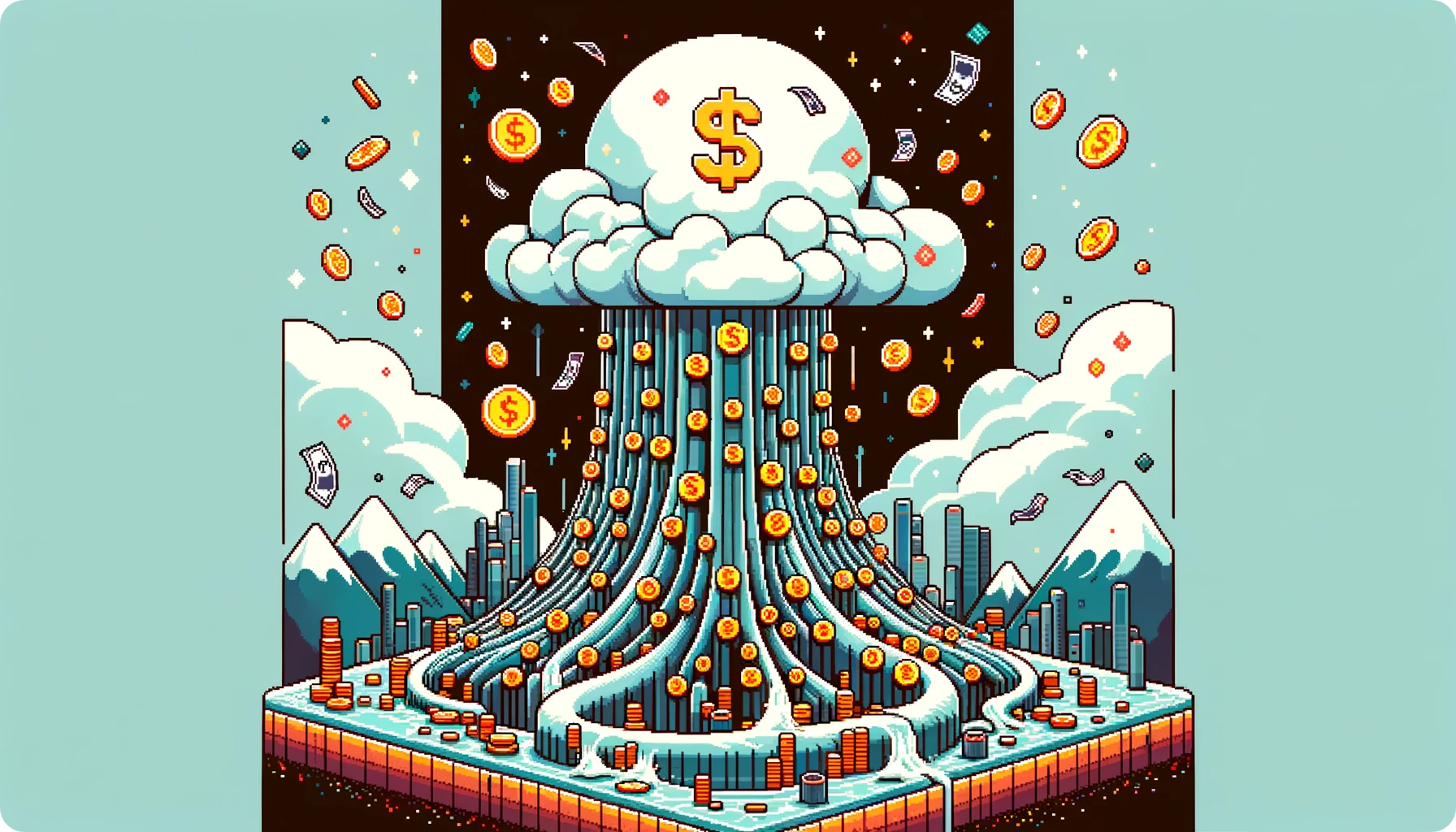The Crypto Startup Slump

Guest Author: Rachael Sacks
2023 may have been a massive year of recovery for the crypto space, but you wouldn't know by looking at the startup investment landscape.
Less than $2 billion was invested in Q3 2023, marking a new cycle low and the lowest since Q4 2020, according to Galaxy Digital. However, with newly restored market optimism triggered by institutional excitement around a BTC spot ETF, it's time to wonder when that momentum will swing back to crypto startups.
I went straight to the VCs to answer some burning questions like: where is all of that capital going? What types of companies are actually getting funded? What trends are we going to see in the next few years (hint: it's not SocialFi) and answers to the real question...
Are we back? Or are we still screwed?
Where Is All of This VC Money Going?

Here's something that you might not know: upwards of $10B was raised for crypto VC in the past two years, and less than 30% has been deployed. That means there is still over 70% of $10B ready to be deployed for crypto startups. But why is there so much left over?
According to Mahesh Ramakrishnan, Co-Founder of EV3 Ventures: "Regulation has made it far harder for new projects to take off. So the number of projects that exist while [the industry] continues to grow is growing at the bottom, not at the top."
Pre-seed and seed startups are seeing the majority of funding, and those who raised during the Bull Market a year to two years ago are stuck because they are right in the middle of the monetary valuation that funds can deploy.
He continued to explain:
"Change starts from the bottom, and currently, there is too much at the top of the funnel. Some of it is sitting still, and some of it is going into rounds at crazy valuations. Some of it is pivoting into different industries that they [VCs] might not have expertise in. But I think at the end of the day; it's an application of competency because people raise funds for something that just doesn't exist anymore. And so people are sitting around saying, Where do we put our money?"
Our VCs said that a lot of things that seemed like they had product market fit back in 2021 actually just had illusory product market fit. So, at this point, we are dealing with the fallout of too much money deployed and not enough users. According to VCs, there are fewer good opportunities, and there are fewer ideas that are working. Because of that, they are not deploying as much capital.
Because of this, the VCs are sitting on this war chest of dry powder, and founders are struggling to raise Series A and beyond. So, what about Series A and B founders? How are they faring in this market right now? What's happening might surprise you: OTC sales of Series A and B startups. This is a way for those founders to keep the lights on and for the VCs to get companies with customers and revenue at 40-50% off.
Is The Bear Market Bet Still Infrastructure?

Infrastructure projects with their SaaS type model have seemed to dominate web3 during the bear. So I wanted to know why.
Ani Pai, Partner at Dragonfly Capital, offered this explanation of why every new crypto company that's raised seems to be infrastructure-based:
"People pivoted to infra because they didn't really have a strong thesis on consumer. So, it's a very agnostic bet. Because people simply pattern match from web2 to web3, AWS makes tons of money, the SaaS model is appealing and something that I think VCs understand phenomenally well."
Another reason that he offered was something that we, as consumers, play a part in. We constantly ask 'wen token?' and it's not just your average degen. Pai says VCs look for projects based on a token as well; "a lot of these tokens go up dramatically in price. There will be a significant delta between the equity value and the token value. You're seeing this a lot even in the ZK space where a lot of people might invest in the ZK project because they believe the token will go up, and not really because of a lot of fundamental value with the tech."
Your average VC is not that different from you, anon. They are also betting on projects based on speculation over the token, not necessarily the tech or utility.
One of my interviewees was @Trace at Figment Capital. Figment only invests in infrastructure, so he had a different take on what's going on in this vertical.
He noted that during the bull, there was more interest in trying other chains, but for now, the view is a bit more conservative, and VCs are sticking to investing in infra built on Ethereum.
"So [during the bull] people are more willing to expand and try new things and invest in other areas. So there was an extension, and now there's been a contraction, and a lot of that contraction has been into the theory and then just a couple other ecosystems. At least on a relative basis, more of the investments are being done within the Ethereum ecosystem."
Wen Consumer investment?
There is light at the end of the tunnel: Pai says that "consumer innovation will resurface, with next the wave of innovation in decentralized physical infrastructure and marketing, as many consumer projects need tracking."
One of our VCs mentioned that after friend.tech, there is more interest in consumers. With others, such as Stars Arena, under new management, it will be interesting to see what is coming in that vertical.
Is the US still hot?
US-based crypto startups accounted for more than 43% of all deals completed and raised more than 45% of the capital invested by VC firms in 2023.
As it relates to VC funding, there are a lot of deals happening in Asia, but they're predominantly with Asian funds because they have the best sense of what's happening on the ground. Looking at the past decade in TradFi, the people who tried to do emerging market investing but didn't actually live there didn't really have a sense of what was going on, and a lot of them got burned.
Founders, especially in crypto, are looking more and more to build their projects abroad and look at markets that might give them more support and a better regulatory framework.
Ramakrishnan said: "We raised so much fucking capital for crypto, and they're just not that many ideas for them. Founders can go anywhere, but the American capitalists are going to find a way to find them unless they're in China. But China has its own specific restrictions as it relates to crypto."
He elaborated: "When you look at investment returns, there's a famous paper from was written that says 70 to 75% of investment returns are actually driven by the geography that you invest in. In the US, 75% of investment returns in the last, I think it was 80 years, [were] driven by geography."
What's Next?

DePin was named by two different VCs that were interviewed. DePin is decentralized wireless and telecommunications. Picture a more decentralized version of Starlink and alternatives to Comcast, Verizon, Optimum, Spectrum, etc. They are networks that are putting the power back in the hands of the consumer and creating digital commodities at scale. There are currently 630 DePin projects in the space, compared to just a handful two years ago.
There is also the potential for decentralized networks; for example, Nosh (food delivery) and Brain Trust (user-owned talent network) are already generating millions of dollars in revenue.
"Compute, Storage, and Bandwidth are the three commodities that are going to power the next wave of decentralization," according to Ramakrishnan.
Are We Back?
Most of the VCs played coy, but there was optimism in companies that were next and what was going on in the venture space for 2024. If Bitcoin stays the way that it is, then most likely, a bull run will be not too far away.
tl;dr
- Upwards of $10B was raised for crypto VC in the past two years, and less than 30% has been deployed.
- DePin, or decentralized wireless, is a massively growing sector with 630 projects and growing.
- Compute, Storage, and Bandwidth are the three commodities that are going to power the next wave of decentralization.
- 70-75% of investment returns are driven by geography.
- There is light at the tunnel for consumer, especially those led by SocialFi, such as Friendtech.
- Generative AI and crypto is not as overhyped as one would think.
- There is renewed optimism in the space for 2024.